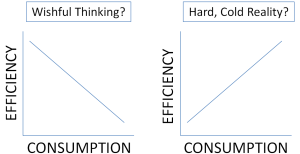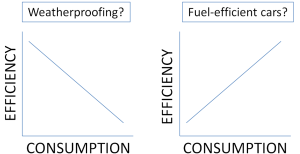Two months ago, I participated in the Science-Engineering-Technology Congressional Visits Day (SET-CVD) in Washington, DC. It’s organized by a bunch of scientific organizations, and I learned about it through the American Geophysical Union.
Basically, it’s a day when ~200 scientists are on Capitol Hill, and this year, our goal was to ask Members of Congress not to cut basic science funding. In the past, our “ask” was to increase spending on basic science, but given the economy and the political situation, it seemed more practical to ask for the level of funding to stay the same than to ask for more.
I ended up talking only with congressional staffers instead of the Members of Congress (which is pretty normal), and it was a great learning experience. Here’s a quick overview of what I learned:
- Every single day, there are hundreds of people on Capitol Hill all asking for something from Members of Congress. On the day I went, there were people in military uniforms, people with purple Alzheimer Disease banners, people with large cowboy hats and Southern accents (ranchers? Texans?), and a lot more people in costumes/outfits I didn’t recognize. Every day, Members of Congress (or more often, their staffers) have to meet with constituents all day who are asking for one thing or another. If you want to get the attention of a Member of Congress, it helps to show up and ask in person.
- There are a fair number of scientists working on Capitol Hill. A number of scientific organizations (AAAS, AGU, SSSA, GSA, etc.) have science policy fellowships for folks with Ph.D.’s in science so there are some really smart people working on Capitol Hill, trying to solve problems. The problem, according to some of the more experienced staffers, is a decrease in collegiality between Members of Congress in recent years. More on that in the next bullet.
- There’s a lot less socializing going on between members of different political parties. Historically, members from both political parties would live in DC when congress was in session, usually in the same neighborhood. Now, being a “Washington insider” is a bad thing so people tend to go back to their home states on the weekends or commute back during the evenings if they live in nearby states. I suppose it’s easier to treat members of the other party as the enemy when you don’t have to worry about those awkward moments when you run into them at the local coffee shop or the gym. There’s also the whole issue about compromise = you’re a traitor to the party (although that seems to be the case more in one party that another — I’ve heard of more discussions of RINOs than DINOs). I’m sure there’s a lot more to the dysfunction going on in U.S. Congress than these two issues, but they seem to be relatively important contributors to the dysfunction.
I also talked to staffers from the Committee of Foreign Relations, and I was so happy to chat with them. This committee works with other countries on issues like the Kyoto Protocol and other international policies. We talked about strategies for how to deal with climate change and reframing the situation to be more about resilience: resilience to unpredictable weather, to problems with energy security, to changes in crop yields, to increased air pollution from smog, etc. Politicians from all parties seem to be a lot more open to conversations about resilience than climate change so I would like to think that there’s hope.
If you’re a scientist, I highly recommend going to a CVD if you ever have the opportunity.


